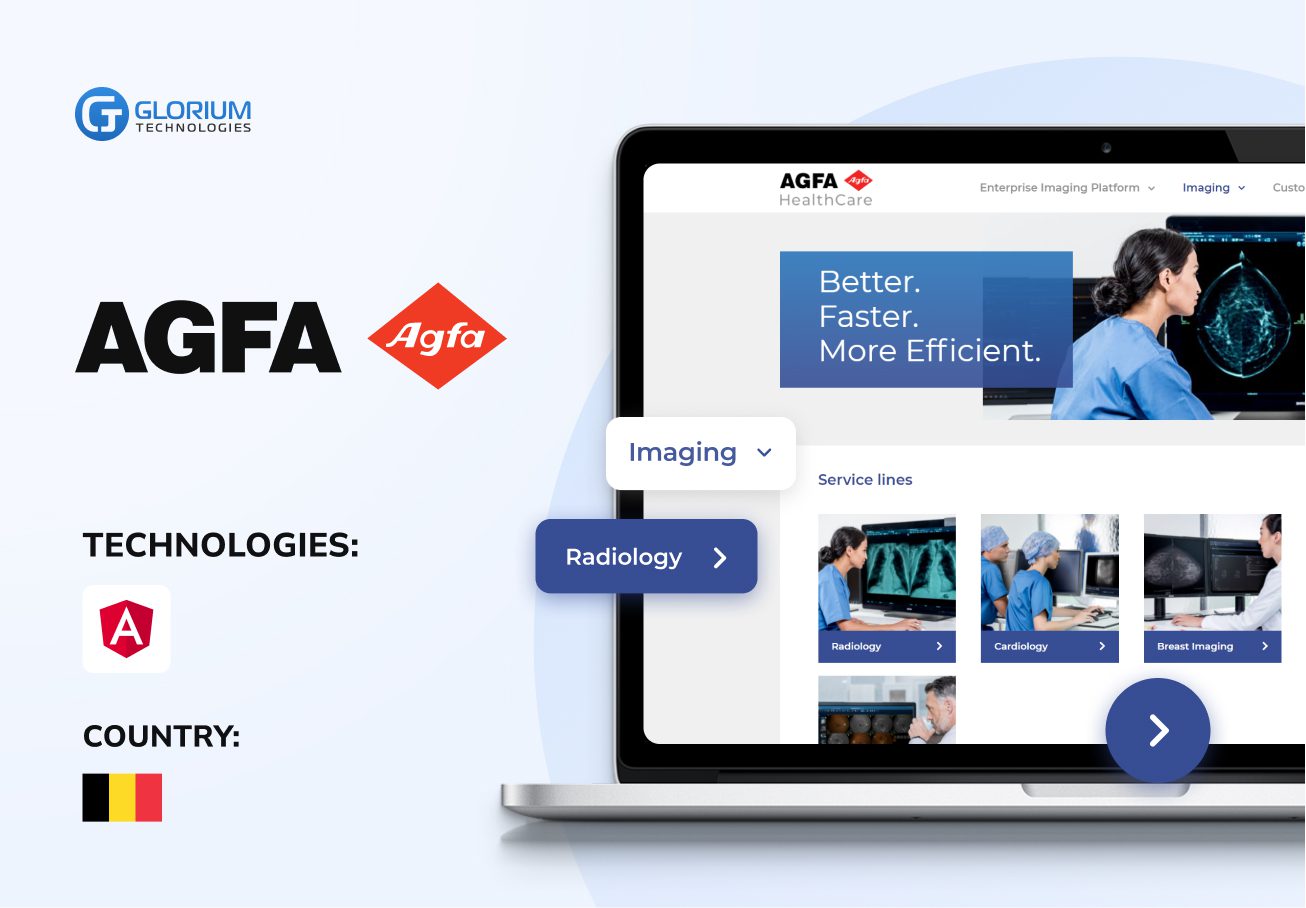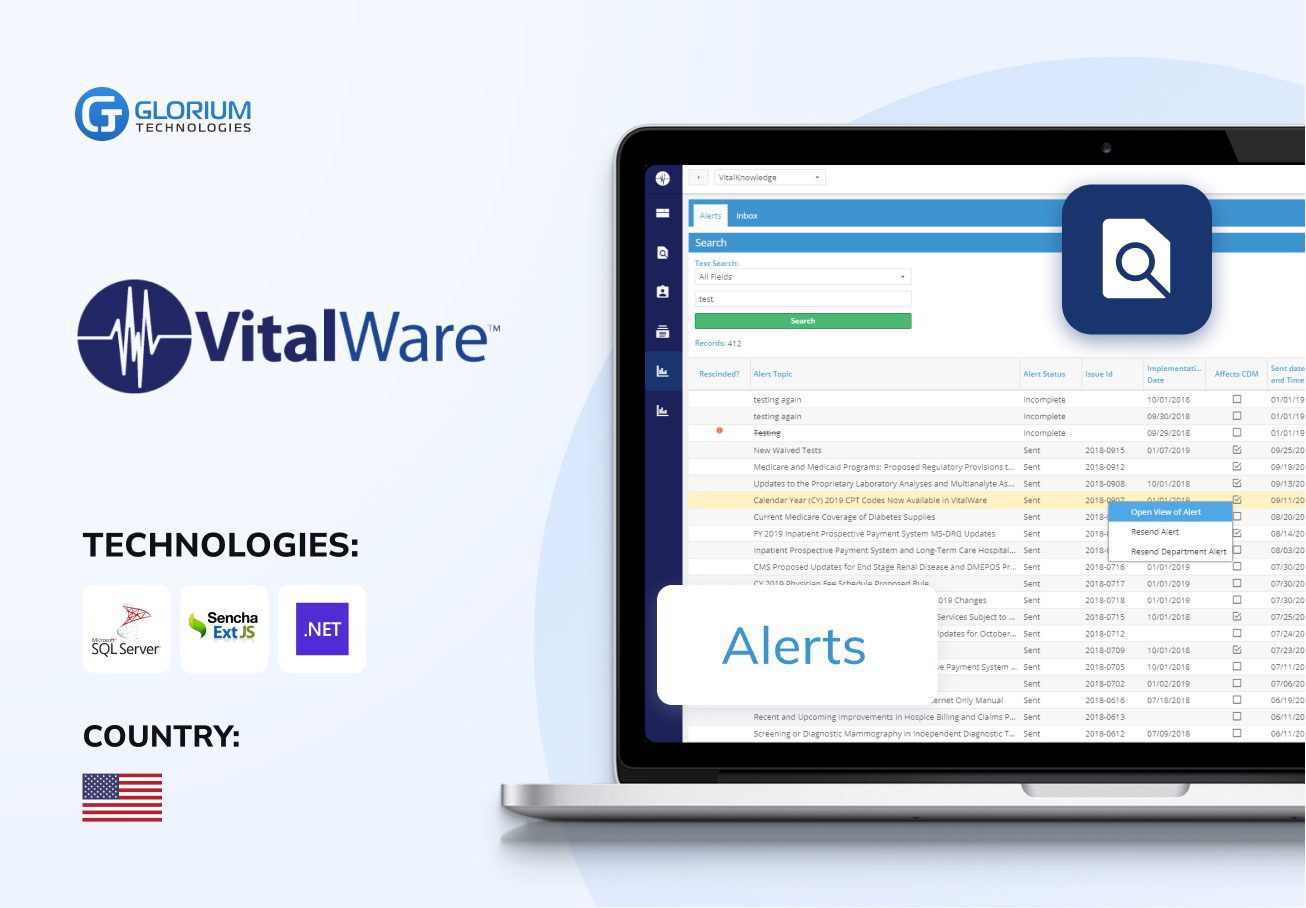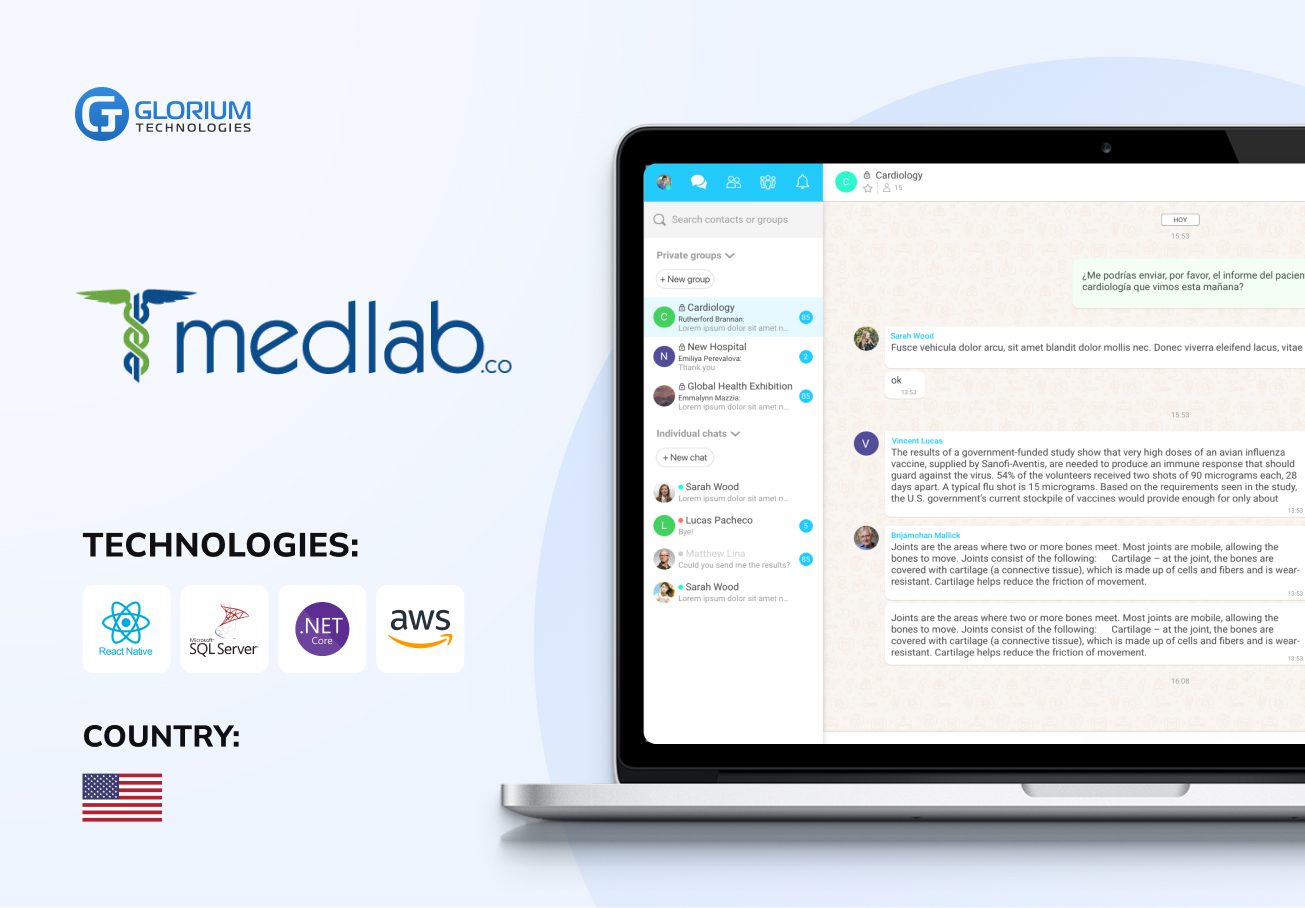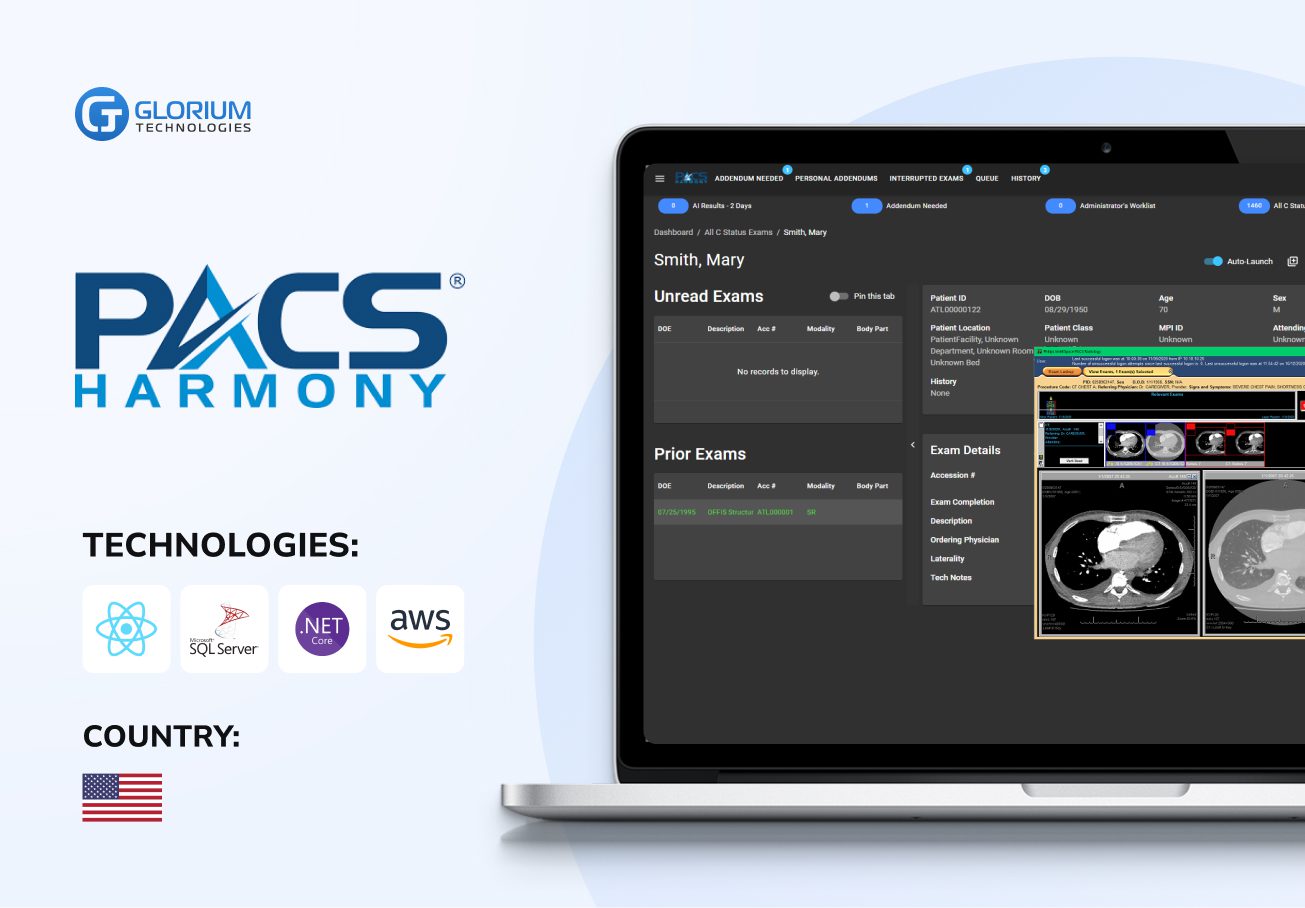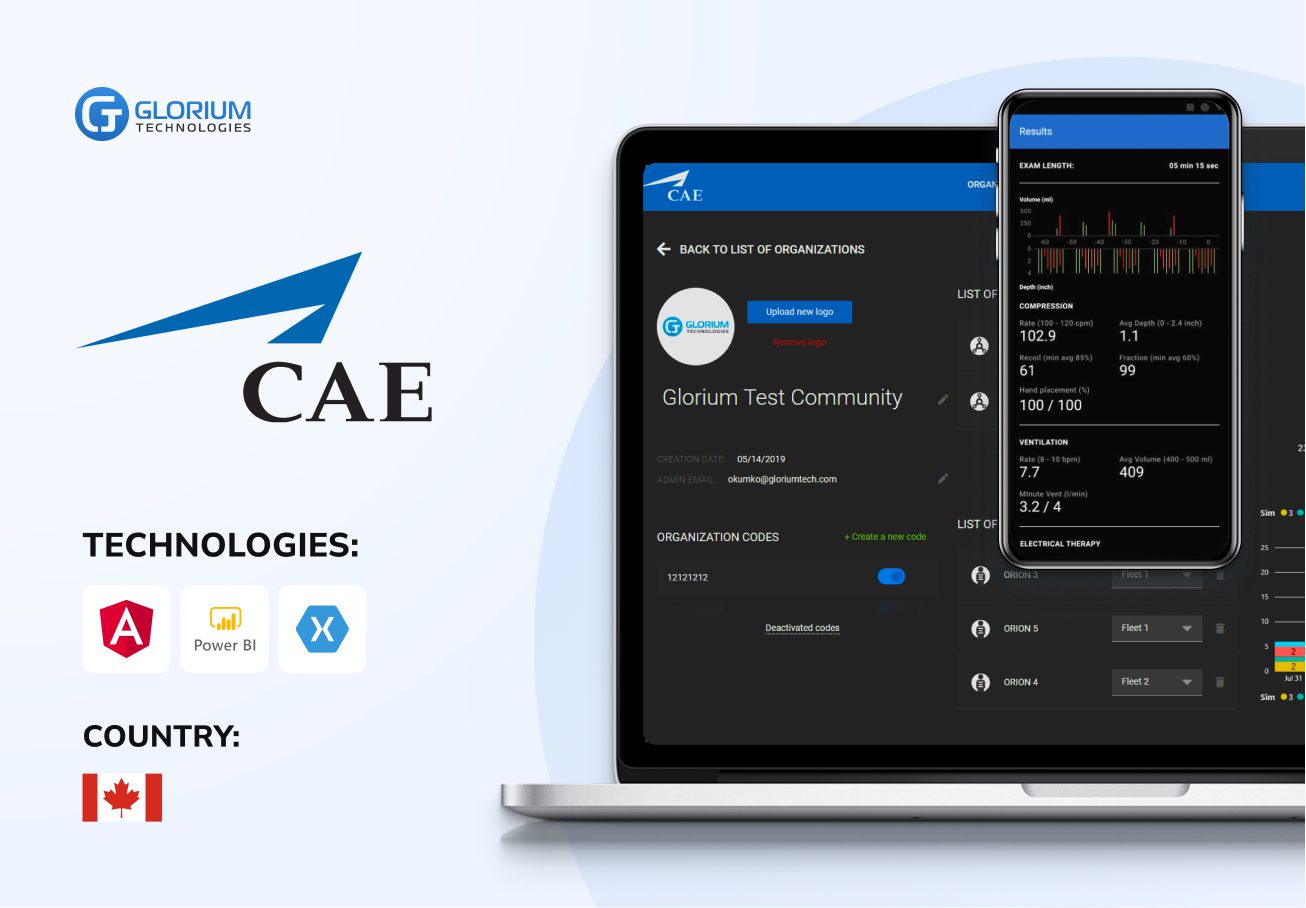HL7 Integration Services


Plan Your Budget Confidently.
Choose Your Starting Point

Don’t Let HL7 Gaps Cost You Trust
HL7 Solutions Built to Make Your Systems Work as One
Powerful Functions Behind HL7 Integration
Fast Data Saves Time and Lives
- Up to 30% decrease in IT maintenance costs
- Up to 29% reduction in admin delays
- Up to 14 minutes off every case
Sync What Matters with HL7 Integration Services
One HL7 Integration for All EHR Needs
HL7 Integration That Works in Practice
See Who Benefits from HL7 Integration
Choose HL7 Integration That Delivers
How We Make HL7 Integration Work Flawlessly
What our clients say about us
Our clients journeys
Who we are
About usGlorium Technologies is a full-cycle app & software development company which covers specific client business needs and manage them with the help of the best possible technology solutions.
Since 2010, we have been inventing digital breakthroughs, helping startups and businesses come out on top in their markets.

Why choose us
Let's Connect!
How HL7 Integration Simplifies Healthcare Data Exchange
The healthcare industry is one of the oldest sectors. It goes way back to humans first starting to tend to each other, mushing down leaves and mud to heal wounds, and so on. We can’t really call this an industry, but our history underlines the necessity of it. Slowly, we learned to keep medical records and started manually transferring them. It then became a fax-based transmission, and today, we share medical history digitally, securely, and almost seamlessly.
Since we do data exchange digitally, HIPPA and other various standards have been put in place since the mid-90s to increase the levels of interoperability in the healthcare system.
One of the challenges of clinical data exchange was its quality and structure. That’s why HL7 was developed to solve these issues. What HL7 does, we’ll discuss in this article and guide you to successful development and integration.
How does HL7 Integration Work: Seamless Exchange of Clinical and Administrative Data
HL7 integration is an important function in healthcare that helps in the easy flow of information between different medical systems and applications. Here, we list five key factors that will help you understand how HL7 integration works:
Standardization of clinical and administrative data
All medical facilities have their unique or specific medical data formats. This can be difficult for another facility to understand. HL7 creates a standard that can be understood by all facilities. Basically, it’s creating a mutual language for dozens of foreigners.
Message formatting
Messages sent from facility to facility all contain essential information that can’t be mistaken or interpreted differently. This is where HL7 comes in with a standard format that all clinics and facilities can understand.
Electronic medical record transmission
For healthcare providers to have continuous and safe access to patient health data, we need safe data exchange systems. HL7 formats the messages and transmits them between systems using MLLP.
Integration tools and middleware
HL7 integration is usually done with other integration tools or middleware that stand between the EHRs and translators and relay the information to the right place. This middleware can work with multiple connections and protocols and therefore, it is a good solution for the healthcare sector in exchange of data.
Continuous monitoring and compliance
HL7 integration needs to be maintained to avoid data corruption of electronic health records and adherence to legal standards like HIPAA in the United States. That’s why we recommend checking the systems periodically and regularly to sort out any problems.
To say it simply, HL7 integration helps healthcare organizations give their patients better care by making sure all their medical data is safe and transmitted correctly between different systems.
Benefits of HL7 Integration for Healthcare Organizations
We already explored what HL7 integration does. You may ask, what’s in it for me? And that’s a great question. Health Level Seven interface development has many real-life benefits that we’re sure you’ll find interesting:
- Enhanced interoperability: Your medical facilities will reduce mistakes made due to inconsistent data exchange formats
- Improved efficiency: Time is essential, especially in the healthcare sector, which is why HL7 integration is beneficial
- Better patient care: Once your medical professionals have easy and secure access to real-time and reliable data, they can deliver better patient care
- Cost savings: HL7 integration might seem like a costly purchase at first, but its’ long-term benefits have a huge effect on cost savings
- Regulatory compliance: You will be able to provide tools and services that adhere to HIPAA
- Scalability: Don’t worry about integrating your new HL7 into existing systems and messing them up. Professional services can conduct this integration without a hassle
- Secure data transmission: With secure messaging and other security measures, HL7 allows your doctors to transfer data without worry
These benefits are the reason successful healthcare organizations choose HL7 integration.
HL7 Integration: A 7-Step Guide for Healthcare Organizations
Implementing HL7 integration in a healthcare system is a complex process that requires careful planning and execution. We recommend consulting with a professional team that can help you implement HL7 effectively. Meanwhile, please take a look at our small guide on HL7 integration.
Assessment and planning
- Identify needs: What are your company’s needs? What kind of information do you want to exchange between systems? (e.g., patient data, lab results, billing information).
- Scope of the project: What’s the scope of your project? Define the systems involved, and the data flows.
- Create a project team: If you’re doing the integration in-house, you need to assemble a team of professionals with experience in clinical workflows, IT, and HL7 standards.
Understanding HL7 standards
- Learn HL7 specifications: Your in-house team should know HL7 standards (HL7 Version 2.x, HL7 Version 3, or FHIR). A professional team is usually hired to meet these specifications.
- Define data structures: Now, it’s time to map out data structures that comply with HL7 standards.
Design and development
- Design interface architecture: Your designers should create sketches of the architecture (using HL7 interface engines, APIs, etc.).
- Develop the interfaces: Then, developers will program the interfaces that will translate and route the data based on the HL7 standard on what to do. This is usually done through middleware or an integration engine.
Testing
- Internal testing: Once you have the program ready, it’s time for QA engineers to start testing the functions
- End-to-end testing: We recommend doing end-to-end testing, manual and automated testing, and more.
- User acceptance testing: Testers can create real-life scenarios, but it’s always smart to involve end-users to get better feedback.
Implementation
- Deploy integration: It’s time to launch your HL7 integration and see how it performs.
- Monitor and optimize: This stage requires continuous monitoring of the performance. It helps gather user feedback and adjust errors if any were found.
Maintenance and Compliance
- Regular updates: This is essential since your business grows and will require updated HL7. It’s also important to make updates to ensure adherence to standards.
- Compliance checks: Once isn’t enough. You have to regularly review your system for compliance with HIPAA and other standards.
Training and Support
- Training: Without training your end user (your staff, in this case), there’s no point in launching the system. Make sure everyone knows how to interact with it.
- Provide ongoing support: Create user manuals, employ technical writers, and so on. This is best done by a professional team.
HL7 (Health Level Seven) Integration using Application Programming Interfaces (APIs)
You know what’s the most modern approach to seamless communication between medical centers? HL7 integration using APIs.
APIs are a form of protocols that define how two or more software applications are to interact with each other. To this end, APIs in the context of HL7 refer to the means of exchanging health information between different healthcare IT systems, including EHRs, LIS, and billing applications.
APIs in HL7 integration support HL7’s latest version standards like HL7 FHIR (Fast Healthcare Interoperability Resources). These are some of the features that have been put in place to ensure that the implementation of FHIR becomes easier and more efficient: JSON, XML, HTTP, OAuth, and REST. This API-based standard enables the rapid integration of components and solutions that may be easily modified as healthcare organizations’ requirements change over time. APIs prove a good way of exchanging data and sharing information as they are flexible and scalable.
The use of APIs in implementing HL7 ensures that healthcare applications can easily and seamlessly share data in real time. For instance, when a patient is admitted into a hospital, their health record can be easily obtained from other medical facilities through API calls.
Why Healthcare Providers Outsource HL7 Integration?
Now, to explore the subject of why successful healthcare organizations prefer to outsource HL7 integration, rather than do it in-house. We already mentioned that HL7 interface development is a complex process. We mapped out seven steps of development and integration, and you can already tell that recruiting all the experts for this job will take weeks and even months.
Companies usually outsource certain services to save time on various processes, save money, and avoid making mistakes that skill gaps may create. We prepared a little list of why outsourcing is the best option for your HL7 integration:
Effective integration of the HL7 interface is a complex process and requires expertise
Let’s say you have a wonderful, talented in-house development team, QA engineers, and user-friendly UX designers. Do they have all the necessary knowledge to integrate HL7? You’ll notice there are some skill gaps, which can be found in professional outsourcing companies that have hundreds of professionals from around the world.
Outsourcing HL7 integration is cost-efficient compared to in-house development
You decided to hire professionals to fill in the skill gaps. The hiring process usually takes months, and it’s especially long when you’re looking for professionals with such specific knowledge. Outsourcing HL7 integration is relatively cost-efficient because outsourcing companies have access to a wide pool of talent, a better and modern tech stack, and skilled project managers who can make the development process flow like a river.
Outsourcing HL7 integration will give you time to focus on core business
We always say this! Owners of medical organizations, representatives, and decision-makers of medical facilities are often so busy with these tasks that they are easily delegated that sometimes, core business decisions and processes are neglected. Outsourcing even the smallest parts of data integration and the HL7 development process will save you the time needed for your business.
Professional HL7 integration services offer high flexibility
This is something that’s difficult to achieve with an in-house team. You’ll notice, as your healthcare facility grows, the needs of healthcare providers and administrative workers grow and change. Professional services can guarantee the scalability and flexibility within your HL7 that your company needs.
HL7 integration with outsourcing companies gives you access to the advanced tech stack
Here at Glorium Technologies, we’ve worked with 140+ projects and have handled many challenges that seemed impossible at first. We do this by accessing our vast talent pool and their knowledge of advanced technologies.
Outsourcing HL7 interface development allows faster time-to-market
One more benefit that a professional team has is that they can focus their expertise and create interfaces quickly, without mistakes and errors. This gives you a chance to deploy your system faster and start training your staff as soon as possible.
Takeaway
Now that you know what you need to integrate HL7 into your organization’s system, it’s time to decide whether to do it in-house or outsource. If you’re still uncertain, we’re here to help you make a decision.
We have delivered more than 140 successful projects in the healthcare industry and can help you integrate healthcare data better and securely.
We’re sure you still have additional questions, so contact us and request a free consultation. Ask as many questions as you want and receive answers without commitment.
Questions You May Have
What specific expertise does your team have in HL7 integration?
Our team is stacked with certified professionals with over a decade of experience. We have completed HL7 integration with a number of healthcare systems and thus guarantee the correct data exchange and adherence to the norms of the healthcare sector.
Can you customize the HL7 integration to fit our specific healthcare IT infrastructure?
Of course, we can. The main point of seamless and error-free integration is customization. The first step of our development and integration process is to conduct an interview with you to learn all the ins and outs of your company and make sure we create a naturally flowing architecture.
What are the typical timelines for completing an HL7 integration project?
This is a difficult question to answer. Every company has its’ unique needs and requirements, hence the variation of development and integration times. To give you an approximate answer, typically, a standard integration project takes somewhere between several weeks to months. If you want to learn how much time your project will take, you can schedule a free, no-strings-attached consultation with us.
Do you offer post-integration support?
Yes, we do. This is an essential step in our integration services. We make sure your staff understands the system and can use it hassle-free. We create user manuals, conduct in-person and online meetings, and adjust to your unique needs.











